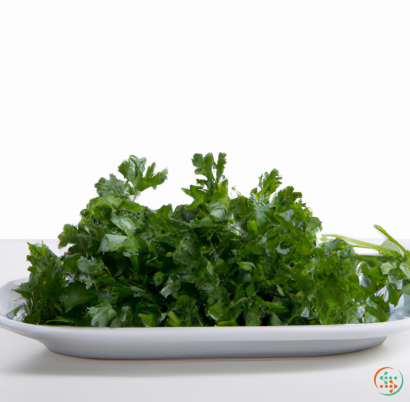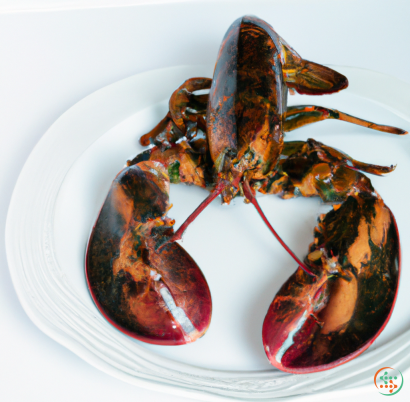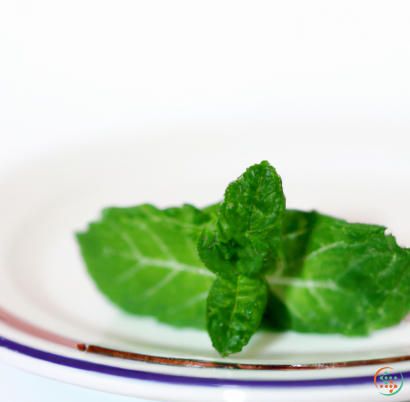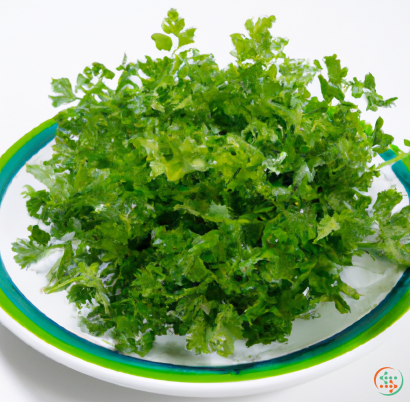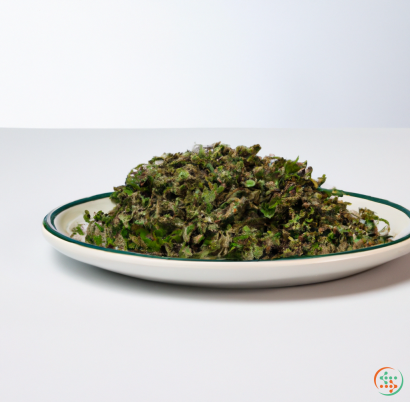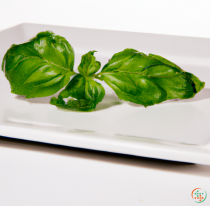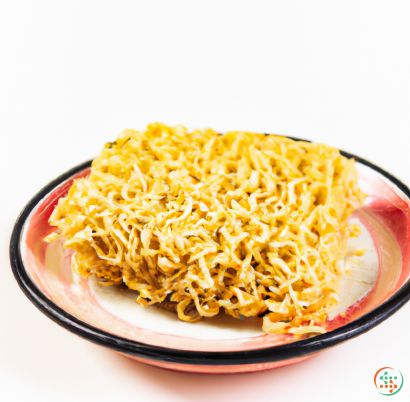Peppermint
Peppermint, known as Mentha piperita, is a hybrid plant produced by cross pollinating water mint and spearmint. It belongs to the mint family Lamiacae, and is widely used in the culinary world and consumed across the world. Peppermint’s aromatic and distinctive flavor make it a popular accompaniment to many dishes.
Peppermint has a cooling and refreshing taste, along with some health benefits. The essential oil extracted from the plant has characteristics that make it sought after for adding healing properties to various medicinal products. Additionally, the peppermint plant holds great significance in medicinal, culinary and cultural history.
The origin of peppermint is said to be a region spanning from the Mediterranean to Central Asia. It is widely believed to have been first cultivated by the ancient Egyptians in 3000BC, where it was mixed with other herbs to treat aching muscles, bowel issues and other such ailments. In Japan, the leaves were reportedly used as a flavoring for tea.
Peppermint is a perennial plant, growing up to 30 to 90 cm tall, with simple, serrated leaves, and white to purple flowers. Its stem is woody and square, and its foliage is a deep green color. It has several varieties, each being used in either culinary or medicinal applications.
The most common type are Red, White and Native varieties – with the Red being the sweetest of the three. The White variety has a slightly sharper taste, while Native is more mild.
Peppermint has traditionally been used to treat a variety of conditions. Its antiseptic and anti-inflammatory properties work to reduce the symptoms of colds, flu, and other illnesses. Drinking peppermint tea can help soothe headaches and relieve digestive issues. It is also known to boost energy levels and concentration, as well as improve alertness and mental clarity.
The essential oil extracted from peppermint leaves can also be beneficial for healing skin conditions, treating respiratory illnesses, relieving indigestion, and providing relief from nausea, vomiting and stomach cramps. The properties of peppermint can be found in a multitude of topical products, such as shampoos, balms and massage oils, as well as in aromatherapy treatments and essential oil diffusers.
When it comes to culinary applications, peppermint is most commonly used to make tea, candy, chewing gum and even desserts, such as peppermint cake. It can also be added to salads, sauces and soups, as well as to some alcoholic beverages. The distinctive flavor of peppermint is a favorite of many, and has even been used to make perfumes and cosmetics.
In the world of herbalism, peppermint is one of the most versatile and widely used plants around. It has a long standing reputation for healing ailments and improving the health of those that consume it, both in its fresh and dried form. Not to mention its pleasant, distinctive flavor – making it ideal for adding a unique touch to many dishes. All in all, it is a gift from nature that we should all enjoy and appreciate.
Peppermint – From Ground To Plate
When the dark winter months come, the strong and iconic aromas of peppermint fill the air. From mouth watering desserts to traditional candies and beverages, peppermint is seen in many wintertime dishes and drinks. But where does this culinary mint come from, and how does it get from the field to a diner’s plate? The answer may surprise you.
Peppermint begins with a seed. The seeds originated in Europe and Asia, but currently most of the peppermint crop is grown in the United States. The seeds are planted in early spring and begin to emerge roughly five weeks later. In its early life, peppermint is composed of several stems, thin leaves, and a taproot. As the peppermint continues to grow and mature, its average height can reach up to three feet tall.
Peppermint is one of the tougher mints to cultivate, as it has high demands for soil and water. The ideal growing environment for peppermint is one of well-draining soil with a slightly acidic pH. If the soil is too sandy or not acidic enough, the peppermint will struggle to thrive. The soil also needs to be kept consistently moist as well to ensure the peppermint receives all the hydration it needs. Growers also need to watch out for signs of pests or disease that could harm the plant.
Typically, harvesting of peppermint occurs in mid-July until early September, when the leaves and stem are at their peak of essential oil content. The leaves and stem are cut by hand with a scythe and then beaten with a stick. This process of beating the plant releases essential oils in the leaves, making them easier to collect. The leaves are then bundled together and hung in a warm, dry area to further dry out the plant.
Once the peppermint is completely dry, it is ready for the distilling process. The essential oils found in peppermint are what give it its distinct flavor and aroma. To extract these oils, the leaves of the peppermint are crushed, macerated and left to steep in either clean water or high-proof alcohol. Next, the mixture is heated and evaporated to remove the oil from the liquid.
When the essential peppermint oil is extracted, it is placed in bottles for use. Although peppermint oil can be used for a variety of purposes, such as aromatherapy and medical treatments, it is primarily used as a flavoring agent for food and beverages. From adding a minty flavor to chocolates, candies, and baked goods to stirring it into hot drinks like tea and coffee, peppermint oil has a variety of uses in the culinary world.
Now that the essential oil is ready, the peppermint can make its way to the dinner plate. At this point, it should be noted that not all of the peppermint plant is edible. Both the stems and roots contain varying levels of concentration of menthol and toxins, and thus it’s recommended by experts not to consume them.
The most popular form of peppermint that is used in places is the extract, which is a combination of water, corn syrup, and the essential peppermint oil. This extract can be used in sweet recipes, like cakes and cookies, or savory recipes like soups and salads. It can also be added to beverages for a flavor boost.
Another popular way to use peppermint is in the form of candy. To make these sugary sweets, the oil is blended with fats, sugar, and coloring agents. The mixture is then melted down, cooled, and cut into the recognizable shape and size of a peppermint candy. After cooling, the candy can then be packaged and shipped to various stores and restaurants.
At this point, the peppermint is ready to be enjoyed fast and easy. From candy canes to peppermint-infused drinks and desserts, there are countless possibilities when it comes to using peppermint. From seed to plate, there is a delicate process that must take place for peppermint to reach the dinner table. The next time you reach for peppermint, take the time to appreciate the hard work that has gone into creating one of the winter season’s most beloved treats.
| Vitamin A | 0.212 mg | |
| Vitamin C | 0.0318 grams | |
| Vitamin B1 | 0.08 mg | |
| Vitamin B2 | 0.27 mg | |
| Vitamin B3 | 0.00171 grams | |
| Vitamin B5 | 0.34 mg | |
| Vitamin B6 | 0.13 mg | |
| Vitamin B9 | 0.114 mg |
| Calcium | 0.243 grams |
Daily Value 1.3 g
|
| Iron | 0.00508 grams |
Daily Value 0.018 g
|
| Magnesium | 0.08 grams |
Daily Value 0.4 g
|
| Phosphorus | 0.073 grams |
Daily Value 1.25 g
|
| Potassium | 0.569 grams |
Daily Value 4.7 g
|
| Sodium | 0.031 grams |
Daily Value 2.3 g
|
| Zinc | 0.00111 grams |
Daily Value 0.011 g
|
| Copper | 0.33 mg |
Daily Value 0.9 mg
|
| Manganese | 0.00118 grams |
Daily Value 0.0023 g
|
| Tryptophan | 0.058 grams | |
| Threonine | 0.154 grams | |
| Isoleucine | 0.154 grams | |
| Leucine | 0.281 grams | |
| Lysine | 0.161 grams | |
| Methionine | 0.053 grams | |
| Cystine | 0.041 grams | |
| Phenylalanine | 0.191 grams | |
| Tyrosine | 0.113 grams | |
| Valine | 0.187 grams | |
| Arginine | 0.173 grams | |
| Histidine | 0.075 grams | |
| Alanine | 0.195 grams | |
| Aspartic Acid | 0.443 grams | |
| Glutamic Acid | 0.409 grams | |
| Glycine | 0.18 grams | |
| Proline | 0.154 grams | |
| Serine | 0.146 grams |
| Total Sugars | 0.131141 grams |
per 100g
|
| Myristic acid (14:0) | 0.01 grams |
|
| Palmitic acid (16:0) | 0.18 grams |
|
| Stearic acid (18:0) | 0.03 grams |
|
| Total Saturated fatty acids: | 0.22 g | |
| Oleic acid (18:1) | 0.03 grams |
|
| Total Monounsaturated fatty acids: | 0.03 g | |
| Linolenic acid (18:3) | 0.44 grams |
|
| Linoleic acid (18:2) | 0.07 grams |
|
| Total Polyunsaturated fatty acids: | 0.51 g | |
| Phytosterols | 0.01 grams |
|
| Total Sterols: | 0.01 g | |

